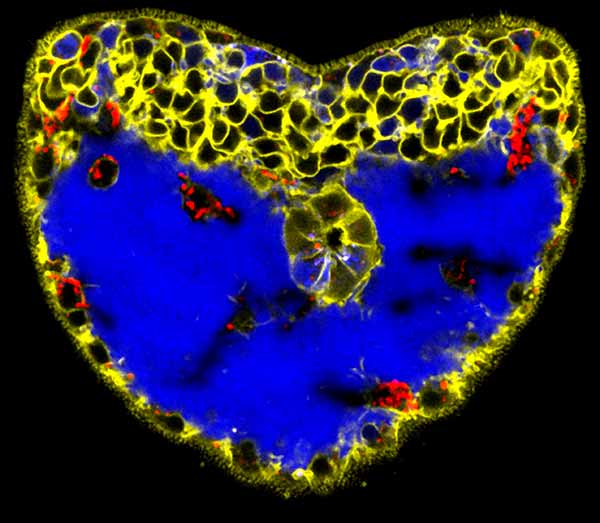Researchers Find an Unexpected Protein Function in Sea Urchin Embryo Development
Finding could lead to new strategies to target disease-relevant proteins
By:
- Mario Aguilera
Media Contact:
- Robert Monroe - scrippsnews@ucsd.edu
- Mario Aguilera - maguilera@ucsd.edu
Published Date
By:
- Mario Aguilera
Share This:
Article Content

A confocal micrograph of a sea urchin embryo.
Despite a flurry of advances in modern science, scientists are still grappling with understanding many of the key functions of basic proteins relevant to human and environmental health.
To help decipher some of these processes, a team led by Amro Hamdoun at Scripps Institution of Oceanography at the University of California, San Diego, is using the embryos of spiny marine creatures known as sea urchins to help uncover some of these mysteries, especially as they play out during the early life stages of development.
One group of proteins inside cells that they are studying, called “drug transporters,” have been known to prevent chemotherapy and other therapeutic drugs from reaching cells in disease treatment.
A new study led by recent Scripps/UC San Diego PhD alumna Lauren Shipp, Hamdoun, and their colleagues has identified the role of one of these drug transporters. The protein known as “MRP5” was found to be involved in the early life stages of the sea urchin gut. The function of this protein has long been a mystery to biomedical scientists and the study showed that it is important for cell signaling events necessary for forming the embryo. The results of the study, published as the cover paper of the journal Development and featured at Science Signaling, could pave the way for new strategies to target these proteins in cases of drug resistance of cancer cells and to prevent birth defects.
“The results of this paper were the culmination of several years of work to systematically map drug transporters in embryos, and figure out what they do,” said Hamdoun, an associate professor in the Marine Biology Research Division at Scripps Oceanography. “The next steps will be to understand how widespread these new signaling functions of transporters are in embryos of other species and to understand how they are controlled by cellular networks that get turned on in both development and disease – this could ultimately provide us with new strategies to target these proteins.”
In addition to Shipp and Hamdoun, coauthors of the paper include Rose Hill, a UC San Diego alumna now a PhD student at UC Berkeley; and Tufan Gökırmak and Gary Moy of Scripps Oceanography.
The study was supported by the National Institutes of Health and a UC San Diego Academic Senate grant. Shipp was supported by National Science Foundation Graduate Research Fellowship and National Defense Science and Engineering Graduate fellowships.
Share This:
You May Also Like
UC San Diego is Strengthening U.S. Semiconductor Innovation and Workforce Development
Technology & EngineeringStay in the Know
Keep up with all the latest from UC San Diego. Subscribe to the newsletter today.



